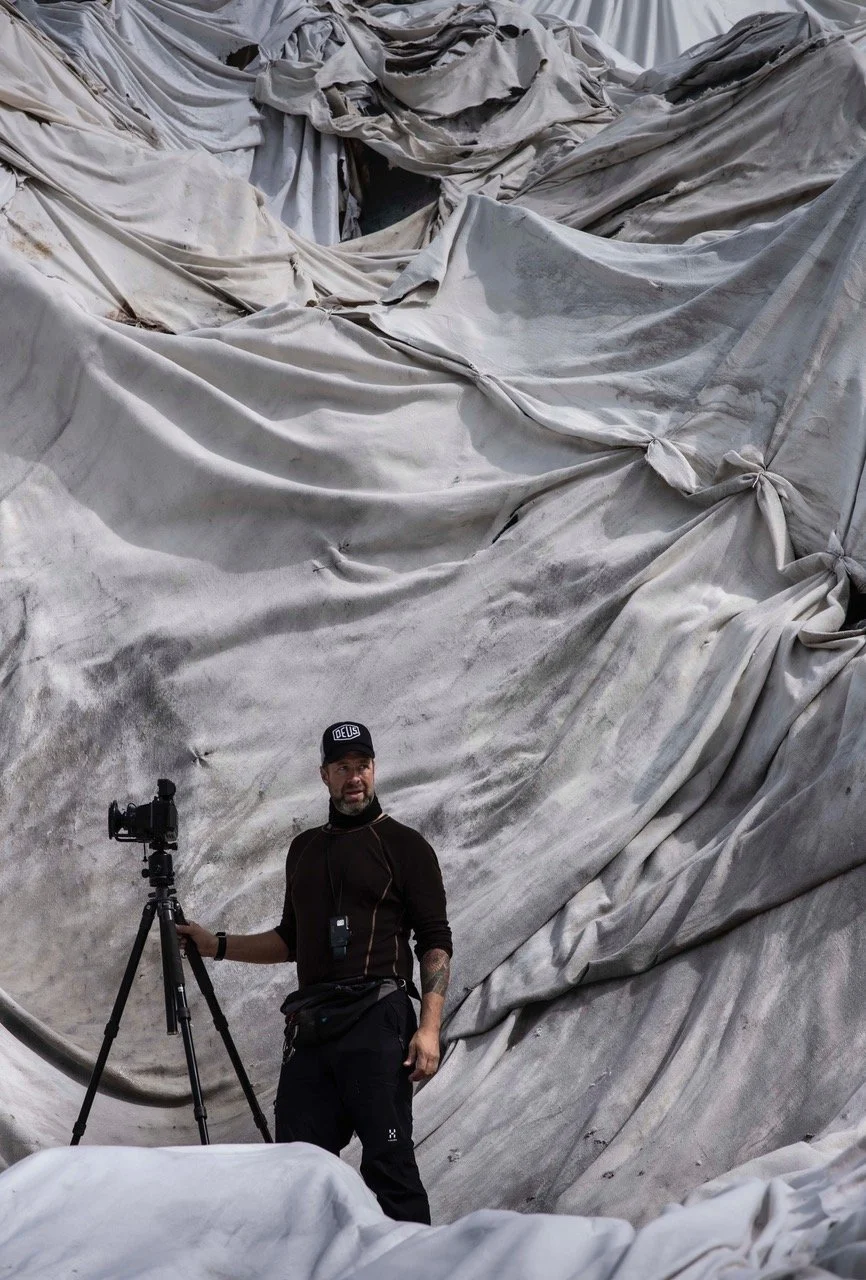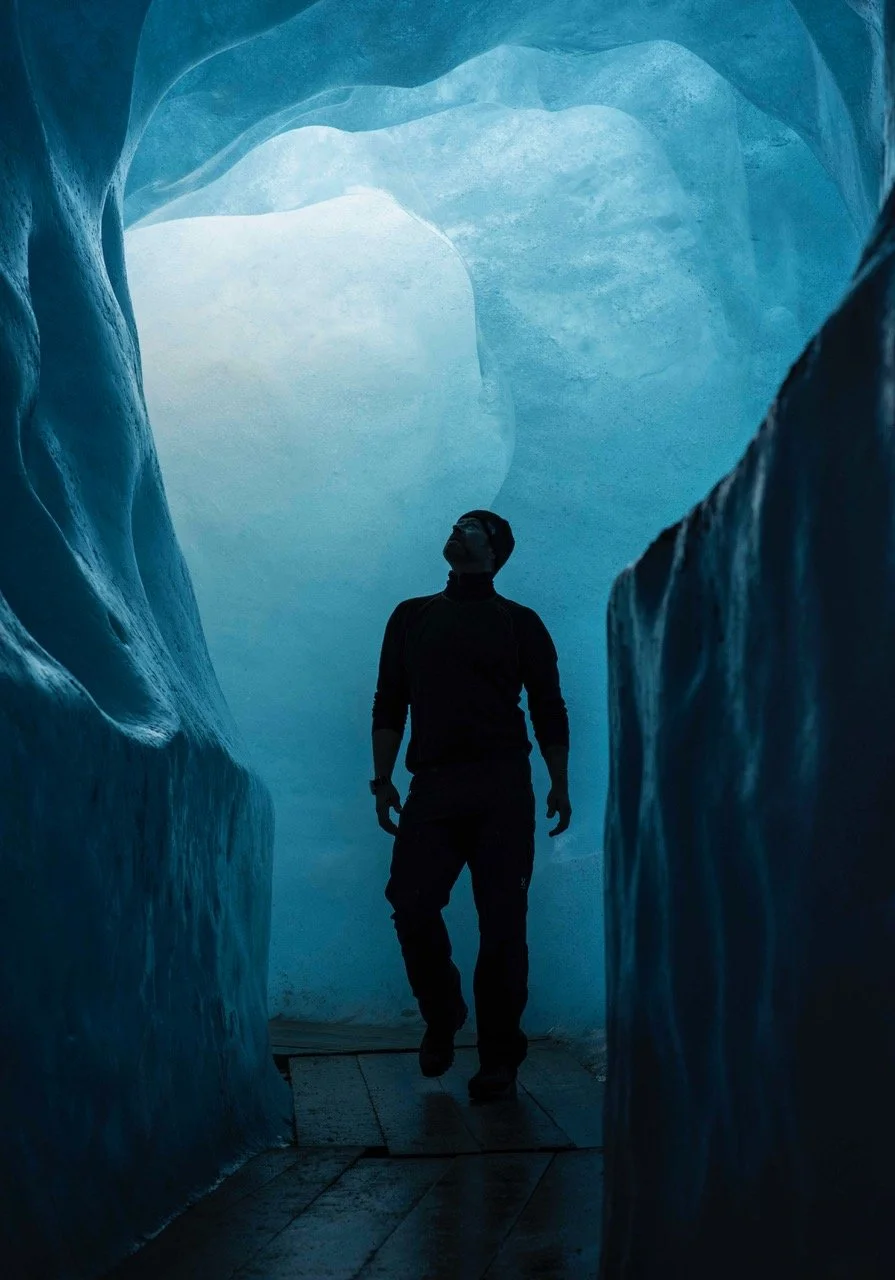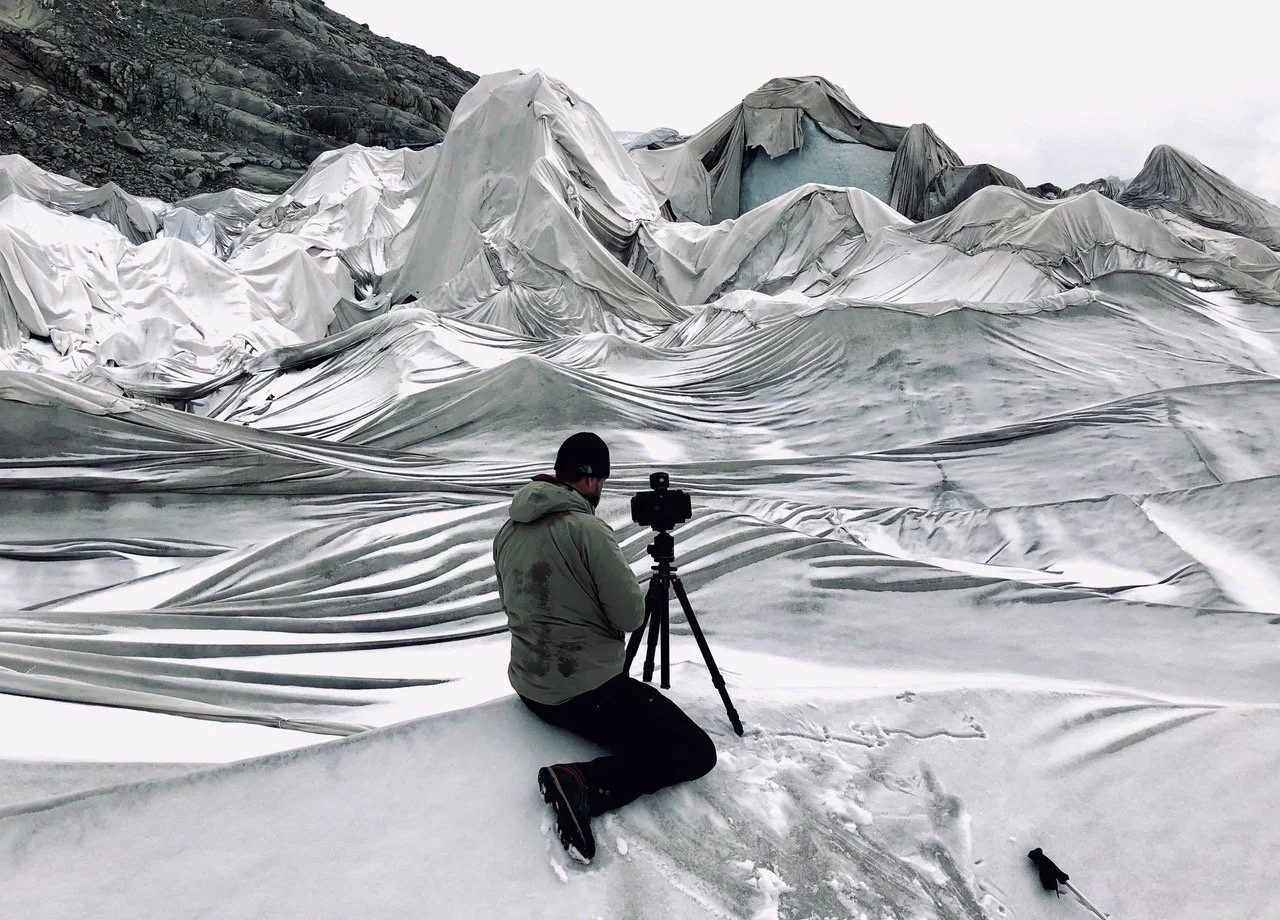Christian Houge: Death of a Mountain
Christian Houge, Death of a Mountain
Written by Trip Avis
Since the dawn of humankind, we have existed in tandem with nature. It envelops and sustains, inspires, heals, and sometimes destroys us. Our species is enmeshed with its ancient, breathing fabric—there is no stop where nature ends and we begin. Despite this, we have continued to flagrantly disregard the warning signals the world is sending us: it takes form in drastic temperature changes, declining seasons, raging forest fires, and melting glacial masses. There is something deeply heartbreaking in watching something seemingly eternal fade into history. Observing this slow decay of ancient permanence is central to Norweigan photographer Christian Houge’s haunting project Death of a Mountain (2016—20). Shooting on the Rhône Glacier in Valais, Switzerland, Houge reflects: “The photographs are abstractions, sometimes resembling a death veil, war-torn ruins, still objects, or wet bodies covered with cloth providing a strong juxtaposition of both visual beauty and decay. This symbolism is further explored in the melting grottoes under the glacial ice, where there is a beauty in death.”
Christian Houge, Death of a Mountain
UV-resistant blankets shroud the mighty, ancient glacier, the primary water source for the River Rhône and Lake Geneva, to counteract centuries of human-induced destruction. Due to their long exposure to the elements, the bone-white shrouds take on weathered, textured patterns resembling rocky crags and cliffs. The white turns to warm gray hues that recall sandy dunes of volcanic ash; the ripples of the protective fabric become increasingly organic in their folds and draping. Though divorced from nature through their artificial origins, the blankets become one with the glaciers, a potent sign of nature’s ever-enveloping embrace; it reclaims them. Research from ClimateWire shows that the blankets help to reduce glacial receding by 70%. Perhaps this communion is the glacier’s silent sentience thanking us for our counteracting efforts.
Christian Houge, Death of a Mountain
Beneath the healing, decay-halting shrouds, the body is alive and ever-changing. Houge recognizes the Rhône Glacier’s anthropomorphic flux, dutifully noting her evolution with each visit: “The glacier keeps changing its appearance and personality, making each meeting more like taking new portraits of a person.” One photograph depicts Houge wandering the labyrinthine halls in the Rhône Glacier’s zulki blue underbelly. The ice ripples above him, ornately carved by nature’s soft, exacting hand, mirror the fabric above. There is an unexpected sense of warmth in the darkened blue chamber; the thick slabs of ancient ice refract the light, casting comforting shadows as if Houge is encased in Mother Nature’s sustaining womb. In another image, Houge’s ink-black silhouette contrasts against a stalagmite tusk of ice; the edges of the UV blankets hang downward, fraying, from the corner. Glacial blue water floats behind an opaque sheen of ice. The image is striking—it largely sums up the project as a whole—a meeting of human, nature, and humanity’s efforts to heal that increasing divide between the two major forces on this Earth.
Christian Houge, Death of a Mountain











